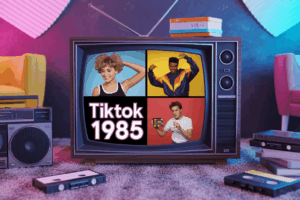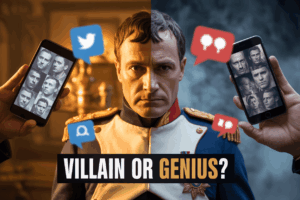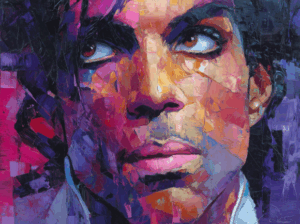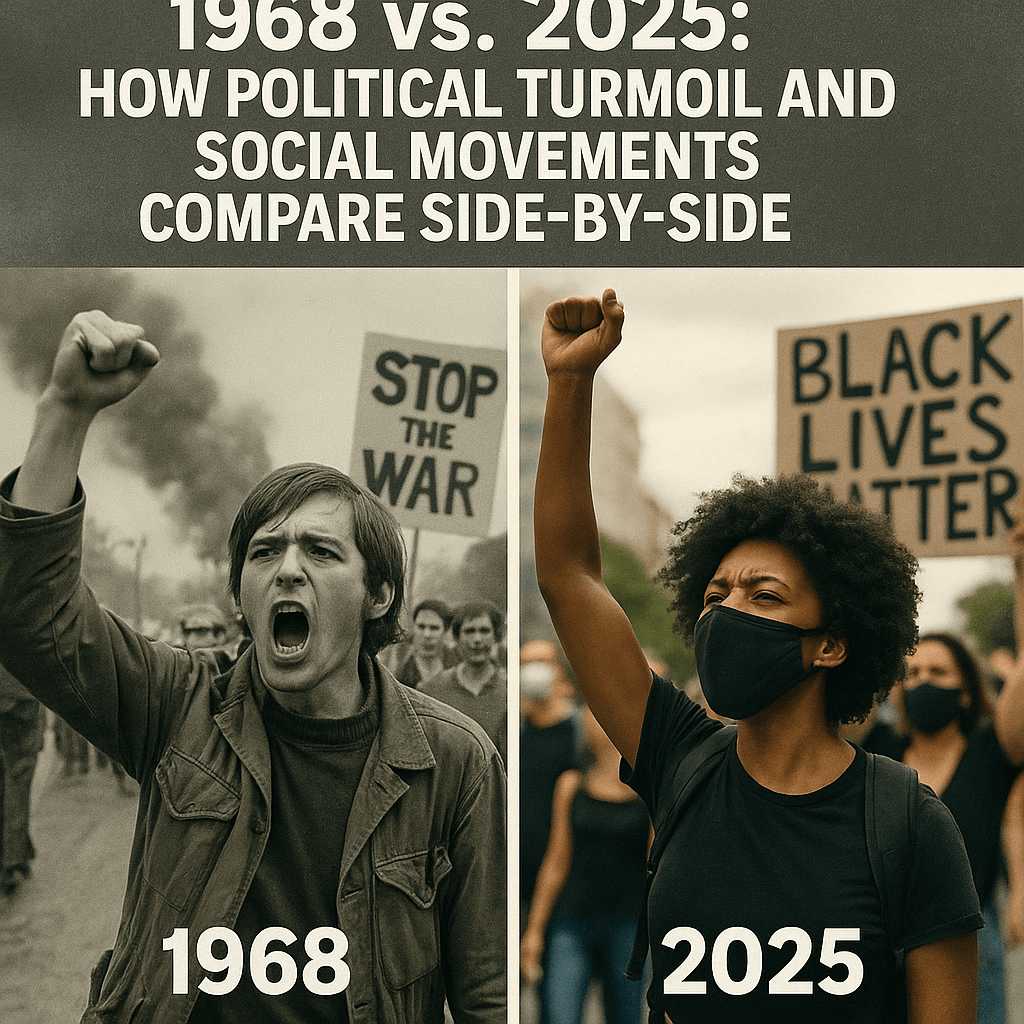
Ever feel like we’re reliving the 1960s? Tear gas in the streets, young people demanding change, and politicians scrambling to keep up. Sound familiar?
Whether you lived through 1968 or are experiencing 2025’s political landscape firsthand, the parallels between these two eras of American political turmoil and social movements are undeniable – and downright eerie.
I’ve spent months analyzing the similarities and differences between these watershed moments in American history. What I found will challenge how you think about both periods.
The establishment was threatened then. It’s threatened now. But here’s what nobody’s talking about: the crucial differences in how these movements are organizing that will determine whether 2025’s upheaval leads to lasting change or just becomes another footnote in history books.
The Political Landscape: Then and Now
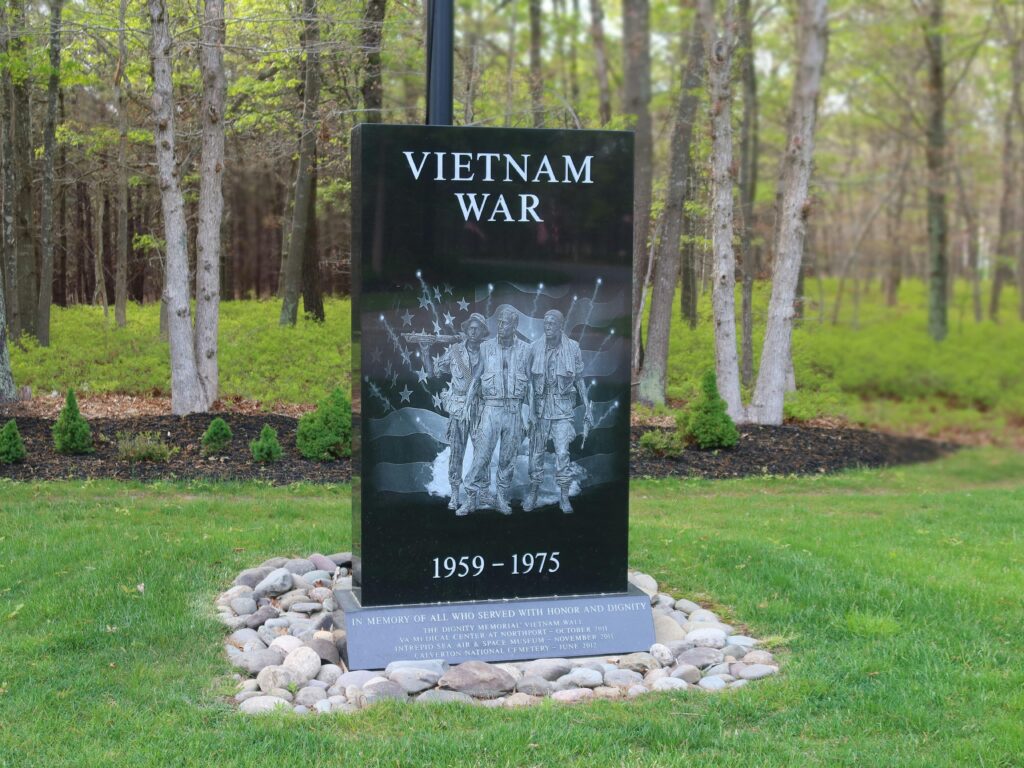
A. The Vietnam War vs. Modern Military Conflicts
The Vietnam War tore America apart in 1968. A military draft forced young men into a jungle nightmare while Walter Cronkite beamed graphic footage into living rooms nationwide. Americans couldn’t escape the reality of 16,899 U.S. troops killed that year alone.
Fast forward to 2025. We’ve replaced the draft with an all-volunteer military and swapped jungle warfare for drone strikes. Today’s conflicts in Ukraine, Gaza, and beyond feel distant to many Americans—sanitized updates on social media rather than body counts on nightly news.
But look closer. Both eras share the same question: What are we fighting for? In 1968, protesters chanted “Hey, hey, LBJ, how many kids did you kill today?” Now, college students occupy buildings demanding their schools divest from defense contractors.
The difference? Scale and visibility. Vietnam claimed 58,220 American lives. Our post-9/11 wars? About 7,000. Yet both sparked fierce debates about American power and purpose.
B. Party Realignment and Polarization
In 1968, the political landscape was shifting under everyone’s feet. Democrats fractured over Vietnam and civil rights. George Wallace ran as a third-party segregationist. Nixon’s “Southern Strategy” began peeling white voters away from Democrats.
Today, that realignment is complete—and then some. The parties have sorted themselves into opposing camps with barely any overlap:
| Issue | 1968 | 2025 |
|---|---|---|
| Party divisions | Regional and ideological diversity within parties | Ideologically sorted parties with geographic clustering |
| Cross-party voting | Common, especially in Congress | Rare and politically dangerous |
| Personal relationships | Bipartisan friendships normal | Cross-party socialization nearly extinct |
Politicians who once disagreed by day and drank together by night now view opponents as existential threats. The middle ground hasn’t just shrunk—it’s been scorched.
C. Trust in Government: A Half-Century Decline
Americans’ faith in government has been on a downward spiral since 1968.
That year marked the beginning of the end for governmental trust. When LBJ took office in 1963, about 75% of Americans trusted the government to do what’s right “most of the time” or “just about always.” By 1968, after Vietnam escalation and urban riots, that number had dropped to 62%.
Fast forward to 2025, and we’re scraping bottom at around 20%.
What happened? Watergate. Iran-Contra. WMDs that weren’t there. Financial crisis bailouts. A pandemic that killed over a million Americans. Each scandal or crisis chipped away at what little faith remained.
The kicker? This decline happened regardless of which party held power. Republicans and Democrats alike watched their credibility evaporate, election cycle after election cycle.
D. Media’s Role in Shaping Political Narratives
In 1968, three TV networks and major newspapers controlled the national conversation. When CBS anchor Walter Cronkite questioned the Vietnam War, President Johnson reportedly said, “If I’ve lost Cronkite, I’ve lost Middle America.”
That unified media ecosystem is dead and buried.
Today’s landscape is fractured into a thousand pieces. Americans curate personalized information bubbles, consuming news that confirms existing beliefs. Conservative viewers watch Fox News while progressives scroll MSNBC or TikTok. We’re not even arguing about the same facts anymore.
Social media algorithms amplify outrage and suppress nuance. A 1968 protest reached audiences through edited footage and next-day newspaper coverage. Today’s demonstration streams live from dozens of smartphones, spreading instantly worldwide.
The gatekeepers are gone. For better or worse, we’ve democratized information while sacrificing shared reality. Both eras featured media manipulation—but today’s version operates at warp speed.
Civil Rights Movements: Evolution and Parallels

A. From MLK to BLM: Tactics and Public Reception
The civil rights landscape has transformed dramatically since 1968. Back then, Martin Luther King Jr.’s tactics of nonviolent resistance—marches, sit-ins, boycotts—dominated headlines. These methods were strategic choices in an era of limited media channels and required physical presence.
Fast forward to 2025, and Black Lives Matter has reimagined activism. While still embracing peaceful protest, BLM leverages social media to mobilize globally within hours. A video can spark worldwide demonstrations overnight—something unimaginable in MLK’s time.
Public reception? Night and day difference. MLK faced 75% disapproval ratings during his lifetime (a fact conveniently forgotten in today’s sanitized history). BLM similarly faces divided reception, though with a crucial difference: support splits clearly along generational lines, with younger Americans overwhelmingly supportive.
B. Women’s Liberation vs. Modern Feminism
The women’s movement of 1968 focused on concrete legal battles—workplace discrimination, reproductive rights, and dismantling obvious barriers. Their demonstrations—like the famous Miss America protest—targeted specific institutions.
Today’s feminism tackles subtler battles: pay transparency, intersectionality, and systemic inequality. Modern feminists recognize that gender issues intersect with race, class, and sexuality in ways the 1968 movement only began to acknowledge.
The biggest shift? Inclusion. Women’s Liberation was primarily white and middle-class. Modern feminism (though still struggling) works to center diverse voices and experiences.
C. LGBTQ+ Rights: From Stonewall to Marriage Equality
The 1969 Stonewall riots marked the beginning of the modern LGBTQ+ movement—a desperate fight simply for the right to exist without police harassment. Activists then couldn’t dream of the victories we’ve seen since.
Consider this transformation:
| 1968-1969 | 2025 |
|---|---|
| Homosexuality classified as mental illness | LGBTQ+ rights recognized internationally |
| Police raids on gay establishments routine | Marriage equality in dozens of countries |
| No openly gay politicians | LGBTQ+ representation throughout government |
Yet challenges persist. Trans rights remain contested, and many countries still criminalize homosexuality. The fight continues, but with foundations built by those brave Stonewall activists.
D. Immigration Activism: Historical Patterns and Current Debates
Immigration activism in 1968 centered around ending quota systems that discriminated against non-European immigrants. The Immigration Act of 1965 had just begun reshaping America’s demographic landscape.
Today’s immigration activism addresses family separation, refugee rights, and pathways to citizenship. The methods have evolved too—from localized advocacy to coordinated digital campaigns that humanize immigrant experiences.
What hasn’t changed? The fundamental tension between America’s self-image as a nation of immigrants and its cyclical resistance to newcomers. This contradiction shaped debates in 1968 and continues to drive our discourse today.
E. Digital Organizing: How Technology Transformed Activism
The most revolutionary change between 1968 and 2025? Technology. Activists in 1968 relied on landline phones, mimeographed flyers, and physical meetings to organize. A national demonstration took months to plan.
Digital tools have democratized movement-building. Today’s organizers create encrypted communication channels, crowdfund legal support, and livestream protests to bypass traditional media gatekeepers. Hashtags become rallying cries. Online petitions gather millions of signatures in days.
This technological revolution cuts both ways. Digital organizing enables unprecedented mobilization speed but sometimes sacrifices the community-building that sustained movements through hard times in the past. The challenge for modern movements is balancing digital reach with the human connections that power lasting change.
Cultural Revolution and Societal Shifts

A. Youth Counterculture: Hippies vs. Gen Z
The vibe shift between 1968’s flower children and today’s Gen Z activists is stark but weirdly similar. Back then, hippies rejected their parents’ middle-class values with their “turn on, tune in, drop out” philosophy. They created communes, grew their hair long, and shocked the establishment.
Today’s Gen Z? They’re digital natives who organize on TikTok instead of at music festivals. They don’t drop acid to expand consciousness—they scroll through endless content that shapes their worldview. But both generations share that raw hunger for authenticity.
| Hippies (1968) | Gen Z (2025) |
|---|---|
| Peace signs & communes | Digital activism & virtual communities |
| LSD experimentation | Mental health awareness |
| Anti-Vietnam protests | Climate crisis & social justice |
| “Don’t trust anyone over 30” | “OK Boomer” sentiment |
B. Music as Political Expression
Music didn’t just soundtrack these eras—it weaponized them. The 1968 airwaves throbbed with Bob Dylan’s protest anthems, Jimi Hendrix’s distorted national anthem at Woodstock, and the Beatles’ “Revolution.” Musicians weren’t just entertainers; they were prophets.
Fast-forward to 2025, and artists like Kendrick Lamar, Billie Eilish, and Bad Bunny weave social justice into streams and downloads. The medium changed (vinyl to streaming), but the message remains: music amplifies the voices of the unheard.
The difference? Today’s political anthems drop on TikTok and go viral in minutes, not months. Artists don’t need record labels to spread revolutionary ideas—just wifi and a phone.
C. Fashion as Protest and Identity
The hippie uniform—tie-dye, beads, fringe vests—wasn’t just clothing. It was rebellion stitched into fabric. Every long-haired man and braless woman in 1968 made a statement against war, capitalism, and sexual repression.
Today’s fashion activism runs deeper. Sustainable brands, gender-fluid clothing, and upcycled garments aren’t just aesthetic choices—they’re political stands against fast fashion, binary thinking, and climate destruction.
Gen Z doesn’t just borrow from 60s style; they remix it with purpose. A thrifted tie-dye shirt in 2025 isn’t just vintage cool—it’s a rejection of mass consumption. Fashion now comes with receipts: who made it, how it impacts the planet, and what wearing it says about your values.
Both eras used bodies as billboards for beliefs. The difference? Today’s fashion revolution is documented, hashtagged, and analyzed in real-time, creating a visual language of resistance that’s infinitely more diverse than its 1968 predecessor.
Economic Forces Driving Discontent

A. Wealth Inequality: Comparing Two Eras
The wealth gap between 1968 and 2025? Night and day.
In 1968, the top 1% held about 10% of America’s wealth. Fast forward to 2025, and they’re hoarding nearly 40%. Back then, CEOs made about 20 times what their average workers earned. Today? Try 400 times more.
What’s changed isn’t just the numbers—it’s how we feel them. In ’68, a factory worker could buy a house, support a family, maybe even save a little. The American Dream had its problems, but it wasn’t a fairy tale yet.
Today’s inequality hits different. College grads drown in debt. Housing costs eat half your paycheck. And those good union jobs that built the middle class? Mostly gone.
Both eras saw people taking to the streets because of this squeeze, but for different reasons. The ’68 protests happened during economic expansion—people wanted their fair share of growing prosperity. The 2025 movements are more desperate—fighting for basic economic survival in a system that feels rigged from top to bottom.
B. Labor Movements and Worker Rights
The labor landscape of 1968 was muscular—unions represented about 28% of American workers, giving them real clout at the bargaining table. Auto workers, miners, and manufacturing jobs formed the backbone of organized labor.
In 2025, traditional union membership has plummeted to under 10%, but something fascinating is happening. We’re seeing labor activism pop up in places nobody expected: Amazon warehouses, Starbucks cafes, digital media companies, and even among gig workers who technically aren’t “employees.”
The tactics have evolved too. The 1968 strike was the ultimate weapon—workers walking off factory floors en masse. Today’s movements leverage social media for viral moments, consumer boycotts, and coordinated pressure campaigns across multiple workplaces.
What’s bringing these movements together across generations? Economic insecurity. In both eras, workers watched their purchasing power shrink while companies posted record profits. The difference is scale—2025’s labor movement faces more powerful, more global corporate opposition than anything their 1968 counterparts could have imagined.
C. Corporate Power and Political Influence
Money talks in politics—always has. But the volume’s been cranked up since 1968.
Back then, corporate influence was straightforward. Business leaders funded campaigns, joined presidential cabinets, and lobbied for favorable policies. But there were guardrails. Campaign finance had actual limits. Media scrutiny could shame excess. And corporations still felt some obligation to the communities where they operated.
The 2025 landscape is corporate influence on steroids. The Supreme Court’s Citizens United decision unleashed unlimited corporate spending. Dark money groups hide donor identities. And multinational corporations play countries against each other for tax breaks and deregulation.
This shift shows up clearly in policy outcomes. In 1968, the top corporate tax rate was 52.8%—today it’s 21%, with many major companies paying effectively zero. Banking regulations that existed for decades after the Great Depression were systematically dismantled starting in the 1980s.
Both eras saw protest movements targeting corporate overreach, but 2025’s movements face a more complex challenge. They’re not just fighting individual companies but entire systems designed to prioritize shareholder value over everything else.
D. Housing Crises Across Generations
The roof over your head tells the story of economic inequality better than almost anything else.
In 1968, America was riding a housing construction boom. The median home price was about $20,000 ($165,000 in today’s dollars), and a typical family could buy in with a single income. Not everyone benefited—redlining and discrimination locked many Black Americans out of homeownership—but housing costs weren’t crushing the middle class.
Flash to 2025, and we’re in a full-blown housing emergency. The median home price has soared past $400,000. Rents consume over 50% of income in major cities. And forget saving for a down payment when you’re juggling student loans and healthcare costs.
This housing squeeze fuels both eras’ protests, but differently. In 1968, housing activism centered on discrimination and urban renewal projects displacing communities. Today’s movements target speculation, corporate landlords buying up neighborhoods, and the criminalization of homelessness.
The generational divide is stark: in 1968, about 65% of young adults owned homes. By 2025, that number has plummeted below 40%. For millions, the basic stability that comes with secure housing—once considered a cornerstone of American life—feels permanently out of reach.
Global Context and International Movements
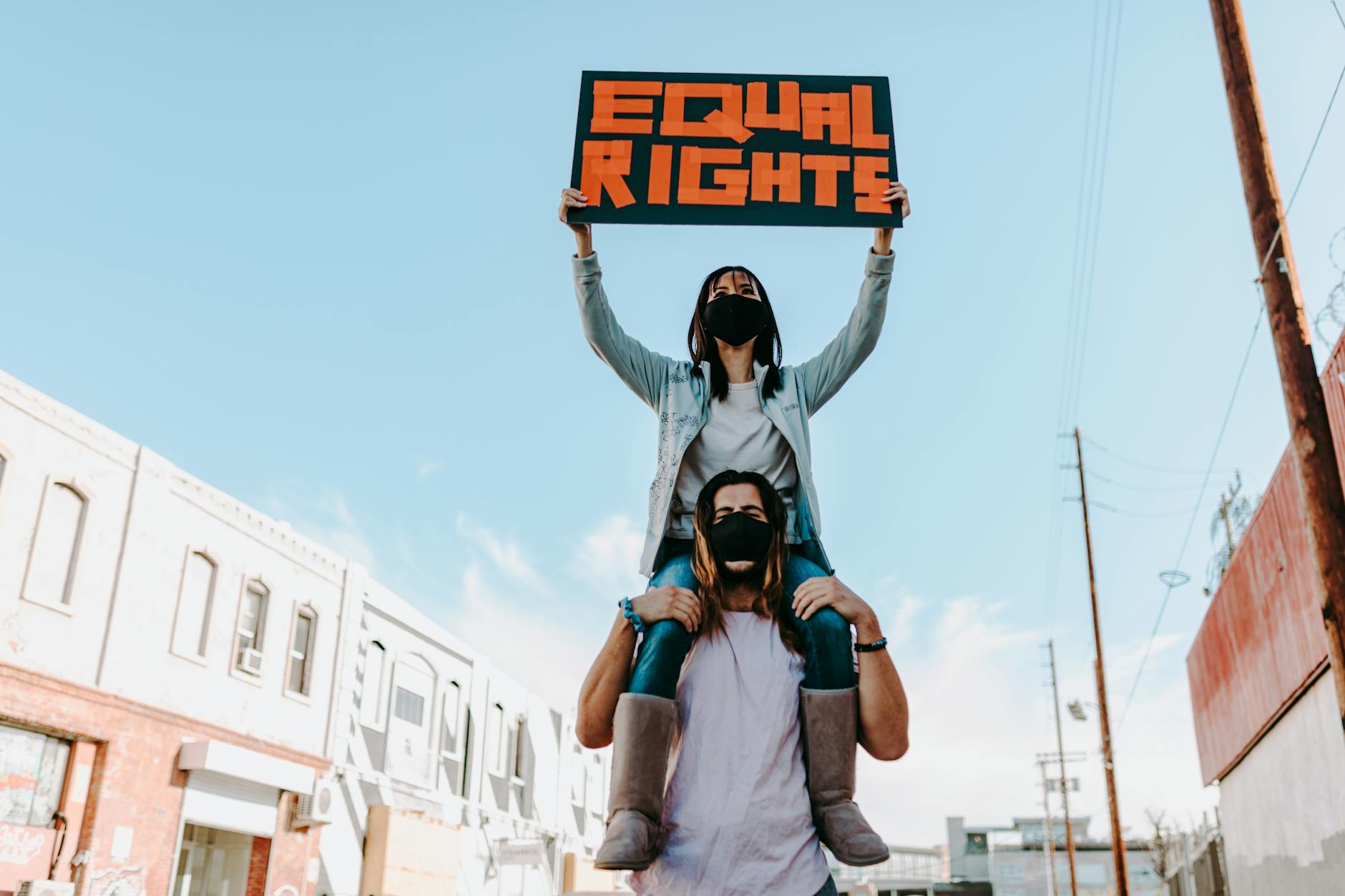
Cold War vs. Modern Geopolitical Tensions
Back in 1968, the world was split in two. You either sided with the Americans or the Soviets. No in-between. When Vietnam burned, it wasn’t just about Vietnam – it was about which superpower would claim another piece on the global chessboard.
Fast forward to 2025, and things aren’t so black and white anymore. Instead of two superpowers, we’ve got multiple players: America, China, Russia, the EU, India. The game’s more complicated now.
Consider this comparison:
| 1968 | 2025 |
|---|---|
| US-Soviet binary | Multipolar power dynamics |
| Nuclear annihilation fears | Hybrid warfare and cyber threats |
| Proxy wars in Vietnam, Latin America | Economic sanctions and trade wars |
| Iron Curtain division | Shifting alliances and partnerships |
The stakes feel different too. Back then, everyone worried about nuclear war ending everything. Today, we’re fighting over tech dominance, supply chains, and who controls the digital world.
Global Protest Movements: Contagion Effects
When students took to the streets in Paris in May 1968, news traveled by newspaper and radio. Still, the revolutionary spirit jumped borders like wildfire – from France to Czechoslovakia, Mexico to the US.
Today? A protest in Minneapolis appears on TikTok feeds in Manila minutes later. Movements don’t just cross borders – they merge and evolve in real-time.
The Black Lives Matter protests of 2020 sparked solidarity demonstrations in over 60 countries. Hong Kong protesters shared tactics with activists in Belarus. Chilean feminists inspired counterparts in Mexico with “Un Violador en Tu Camino.”
This digital cross-pollination means today’s movements share symbols, tactics, and language in ways impossible in 1968. The fist raised in Memphis then might have taken weeks to inspire protesters in Prague. Now, hashtags and livestreams create instant global movements.
Climate Activism: From Earth Day to Global Climate Strikes
The first Earth Day in 1970 (born from the activist energy of the late 60s) drew 20 million Americans to care about the environment. Pretty impressive.
But compare that to 2019, when Greta Thunberg’s school strike mushroomed into 7.6 million people marching across 185 countries in a single week.
The environmental movement has transformed from a niche concern to existential urgency. In 1968, activists worried about pollution and wildlife. Today’s climate strikers talk about civilization’s survival.
The tactics have evolved too. Earth Day was about education and awareness. Today’s climate activists block traffic, occupy corporate headquarters, and demand system change, not just better recycling programs.
What’s striking is how climate activism has become the thread connecting numerous other movements – indigenous rights, economic justice, anti-colonialism. It’s not just about saving trees anymore. It’s about reimagining society entirely.

The tumultuous events of 1968 and the evolving landscape of 2025 reveal striking parallels in political division, social activism, and cultural transformation. While the civil rights movements of the 1960s focused on legal equality, today’s social justice initiatives have expanded to embrace intersectionality and digital activism. Similarly, economic inequality continues to fuel public discontent, though through different manifestations across these eras. The global context shows how movements for change have become increasingly interconnected across borders.
As we navigate the complex political and social terrain of 2025, the lessons of 1968 offer valuable perspective. The historical comparison reminds us that periods of intense upheaval often precede significant progress and institutional reform. Whether through grassroots organizing, voting, or peaceful protest, individual engagement remains essential in shaping a more equitable future. The question now isn’t whether change will come, but how we’ll participate in directing its course.
Conclusion: Is History Repeating Itself?
1968 and 2025 share uncanny parallels: mass protests, technological leaps, and societies at a crossroads. But while 1968’s movements were fought in streets, 2025’s battles rage online and in legislatures.
Final Thought: Are we doomed to cycle through history? Or can AI and modern activism forge a better path?
For more AI-powered historical insights, explore Time Genius’s interactive timeline tool.
